Nvidia GeForce RTX 2060 Review: Is Mainstream Ray Tracing For Real?
Why you can trust Tom's Hardware
Results: Tom Clancy’s Ghost Recon Wildlands and Tom Clancy’s The Division
Tom Clancy’s Ghost Recon Wildlands (DX11)
We use Ghost Recon’s Very High detail setting to avoid the Ultra preset’s Turf Effects option, which creates an unfair comparison between GeForce and Radeon cards.
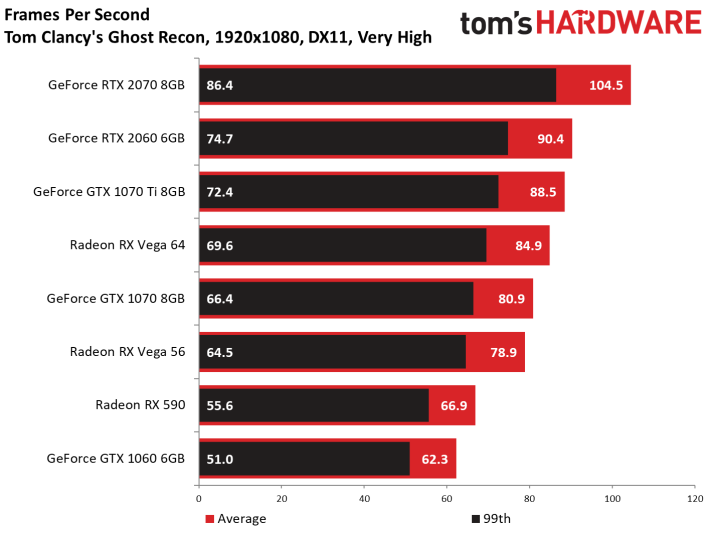
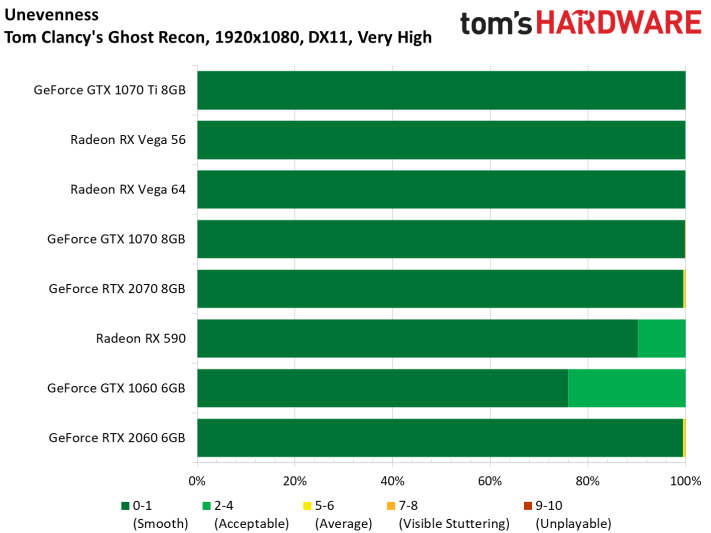
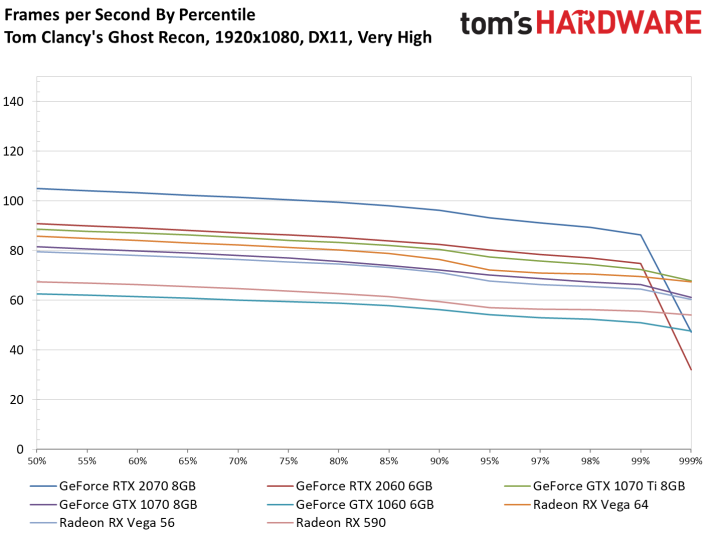
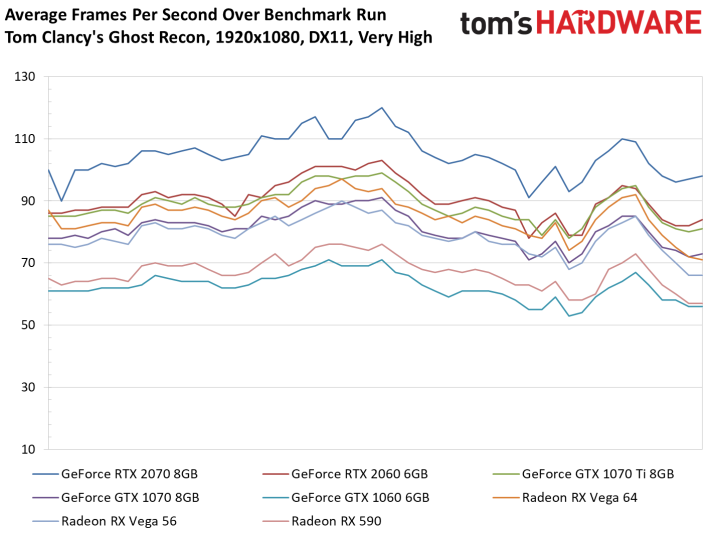
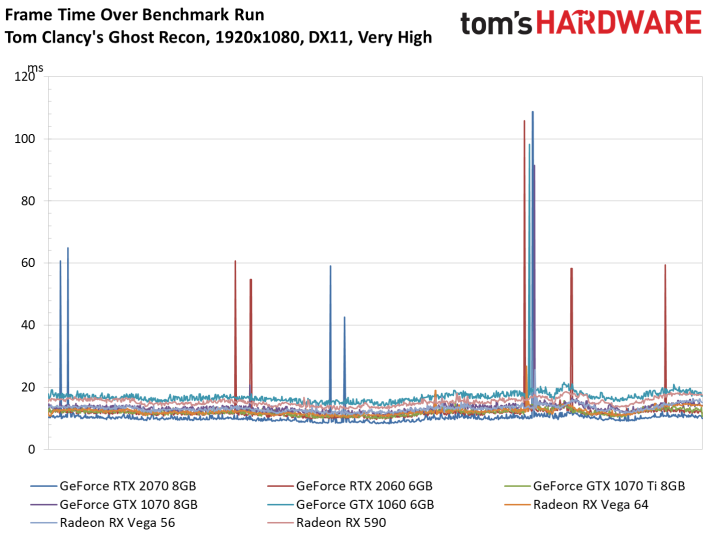
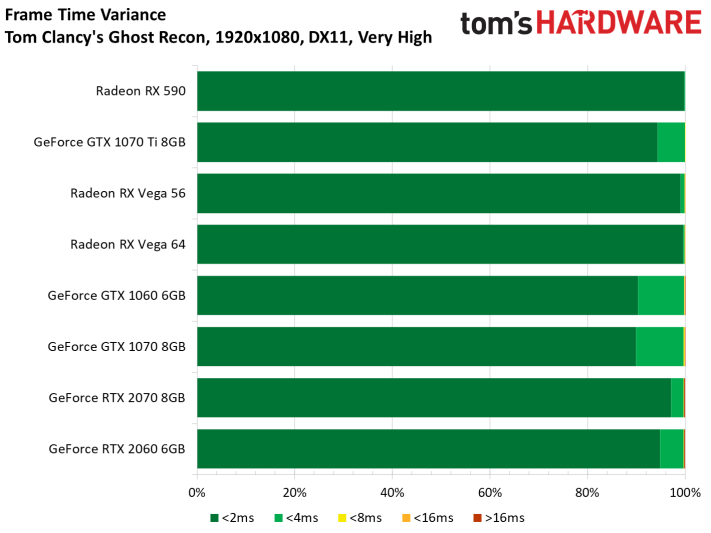
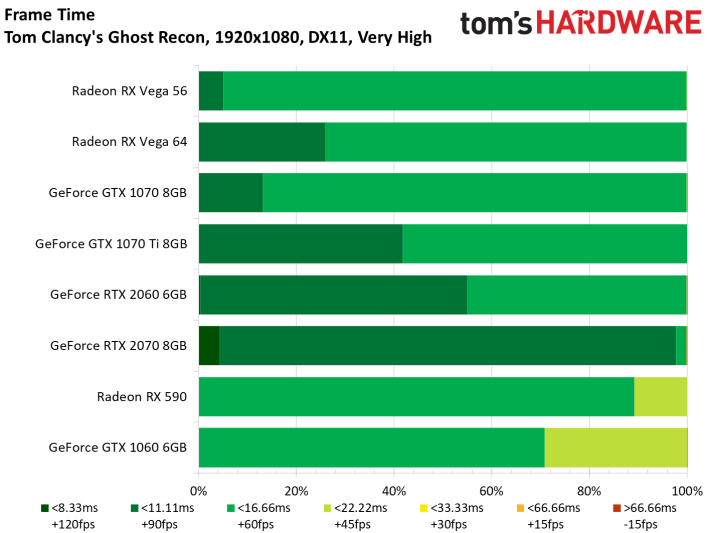
RTX 2060 scores another slim win over 1070 Ti at 1920x1080, cresting the 90 FPS mark. Interestingly, frame time spikes on both Turing-based cards cause notable drops in the worst 0.1 percent of frame rates.
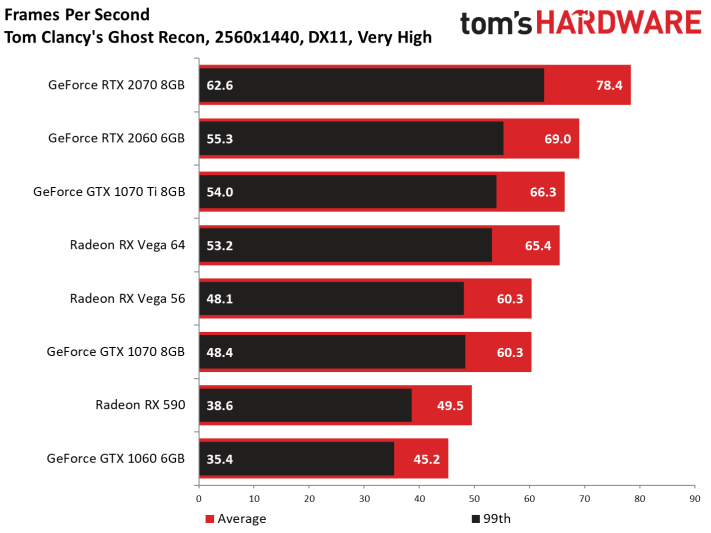
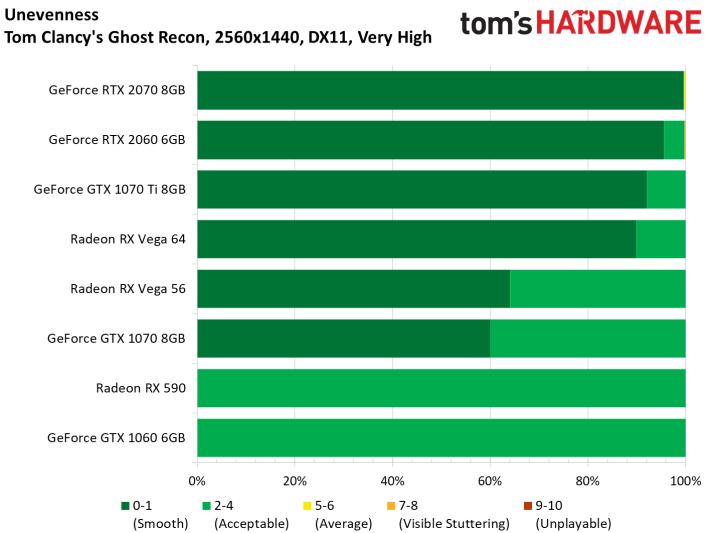
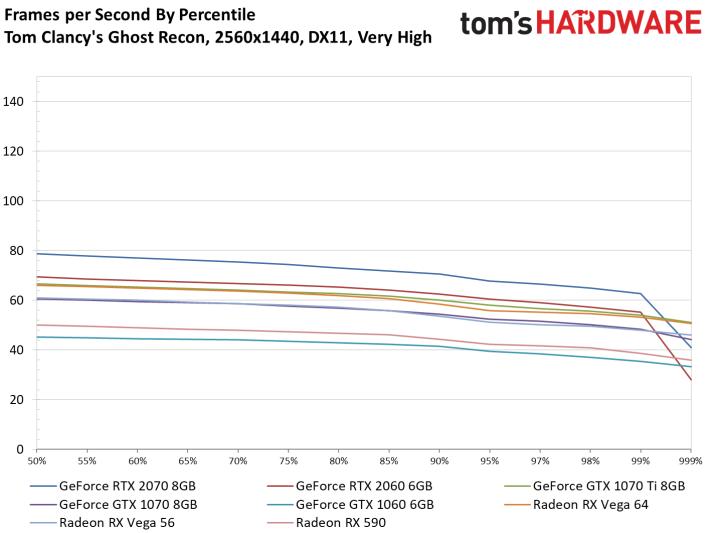
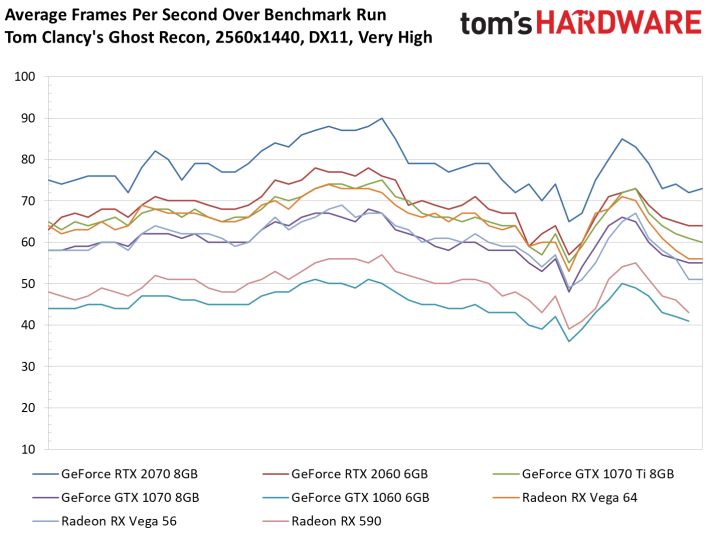
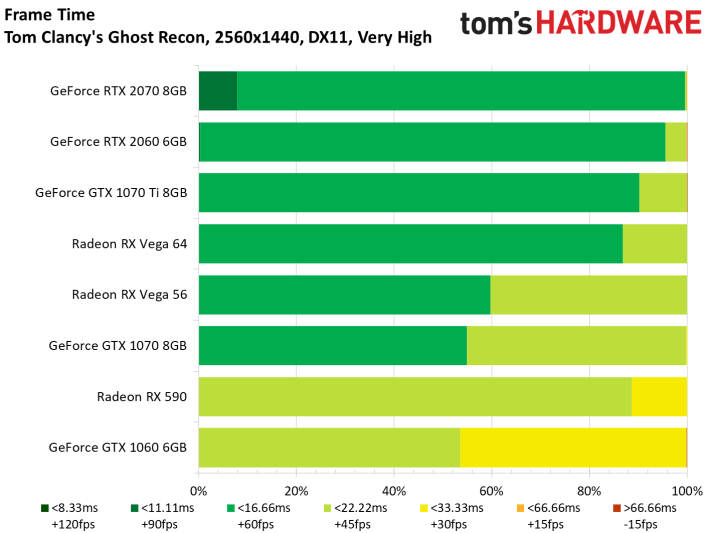
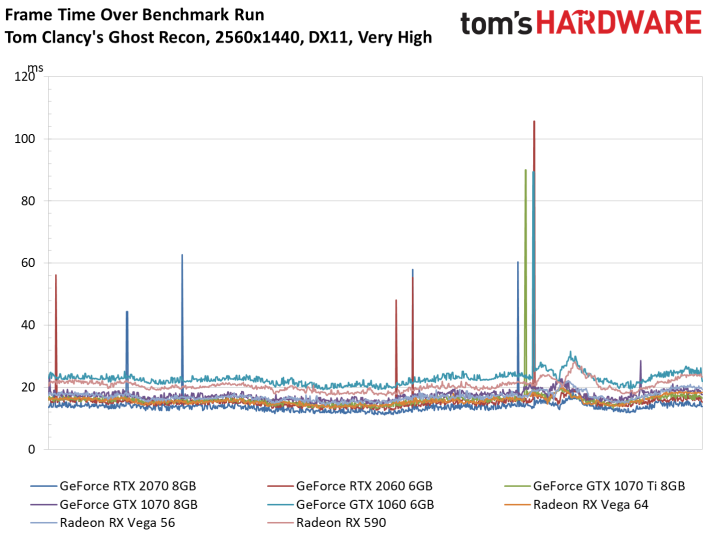
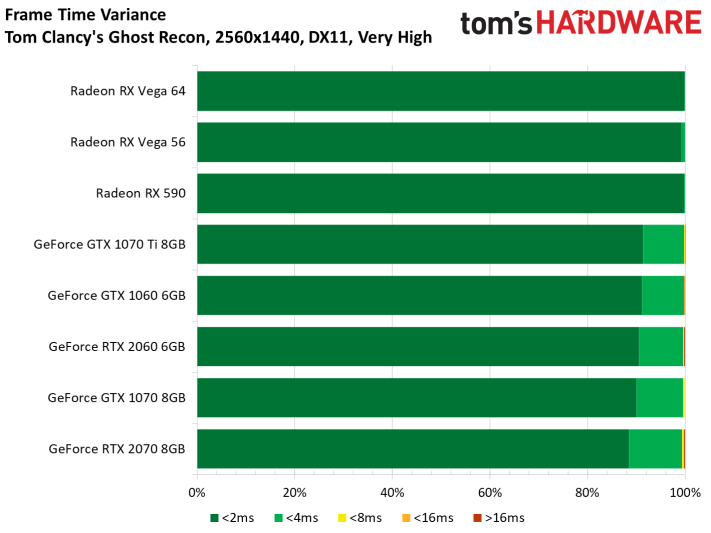
The same phenomenon affects RTX 2060 and 2070 at 2560x1440—although the dips don’t appear in our 99th percentile graph, they’re apparent when we break frame rates down into percentile. A handful of spikes also show up in the frame time over benchmark run chart.
Nevertheless, 2060 turns in better results than 1070 Ti to the tune of four percent, also beating 1070 and Vega 56 by 14 percent.
Tom Clancy’s The Division (DX12)
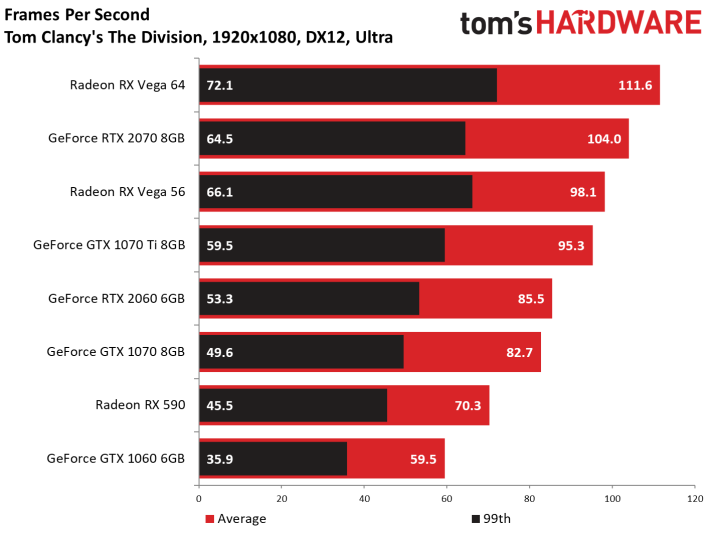
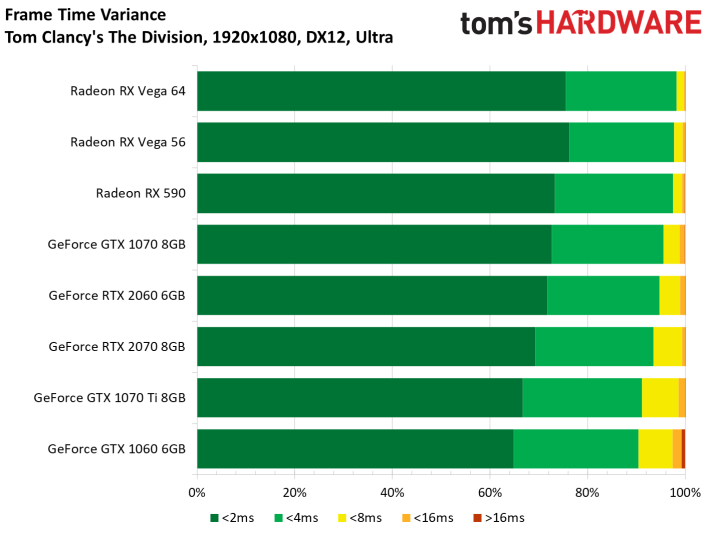

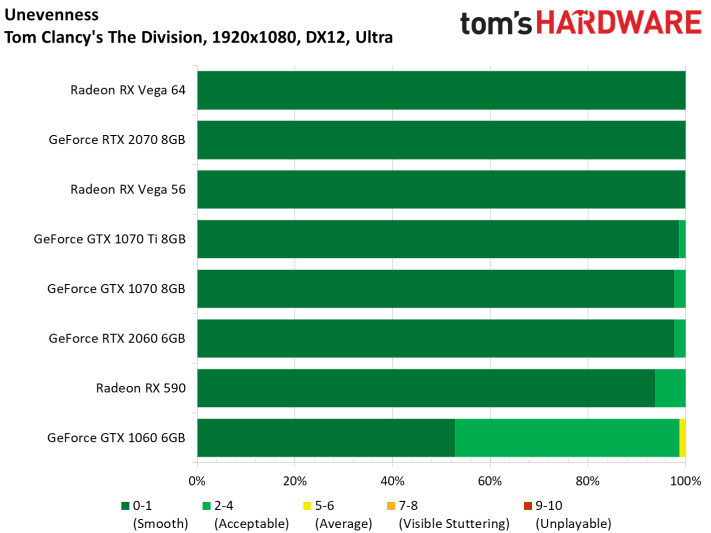
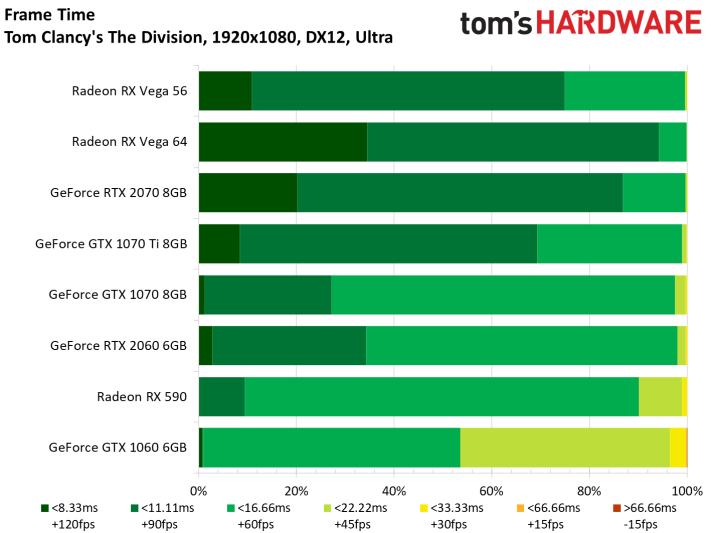
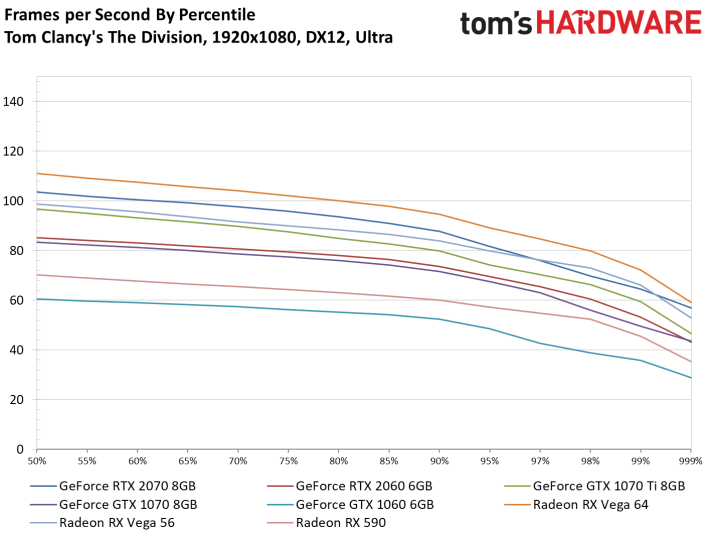
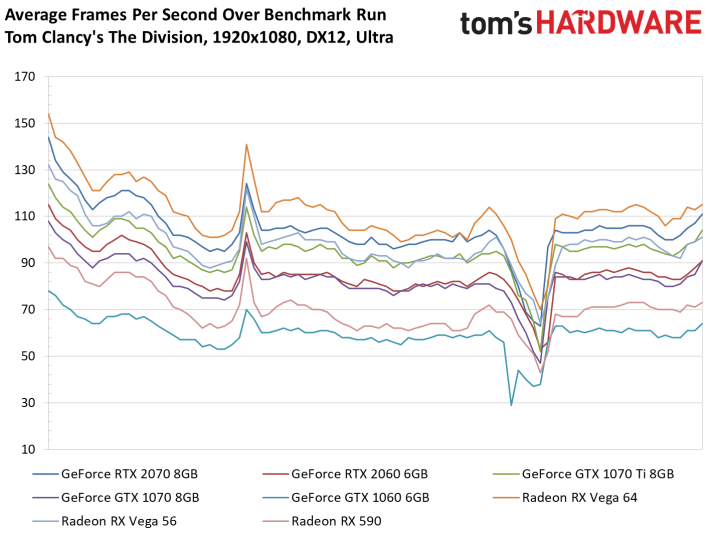
Although The Division and Ghost Recon hail from the same series, they utilize different game engines with support for dissimilar graphics APIs. Whereas Nvidia cards dominate Ghost Recon, AMD’s Vega 64 and 56 assert themselves in The Division. The former takes first place, while the latter bests 1070 Ti and approaches the 2070.
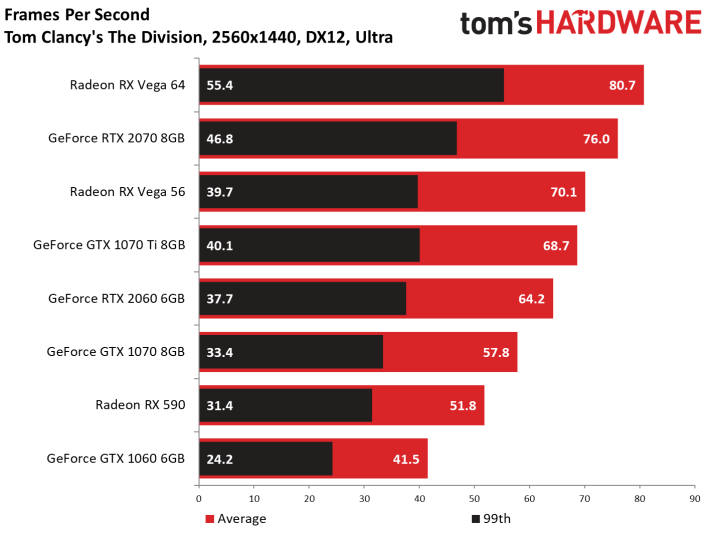
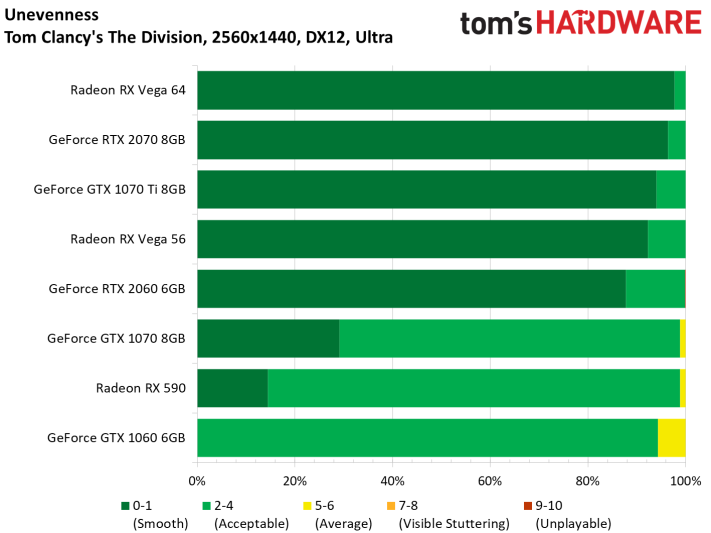
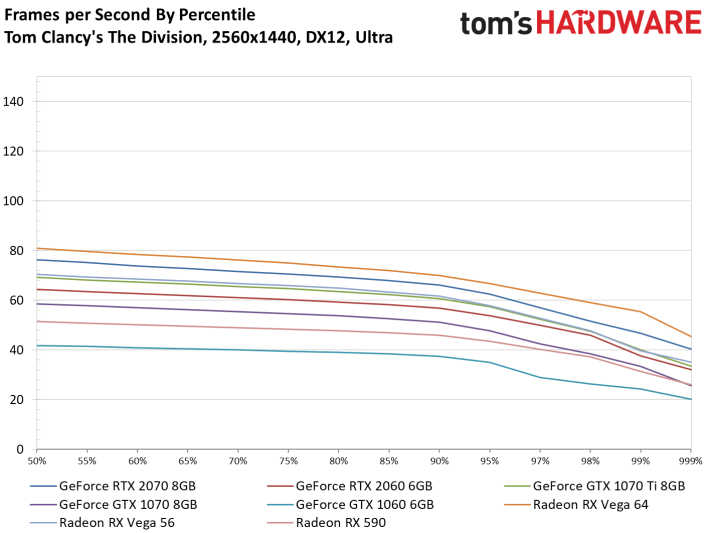

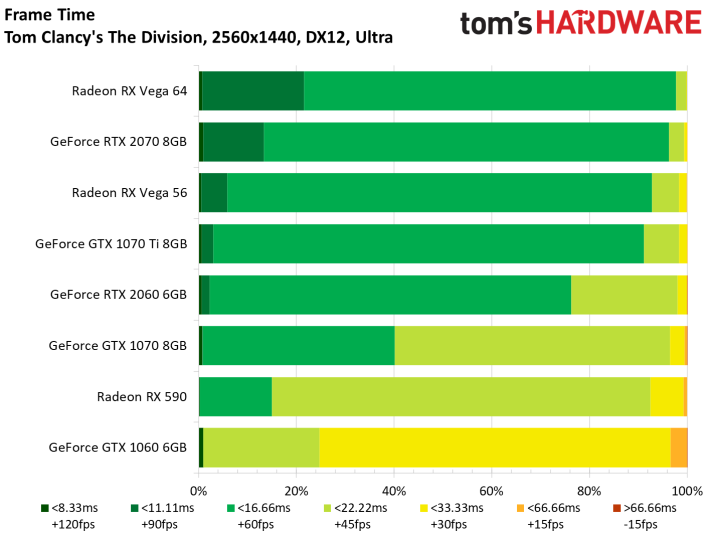
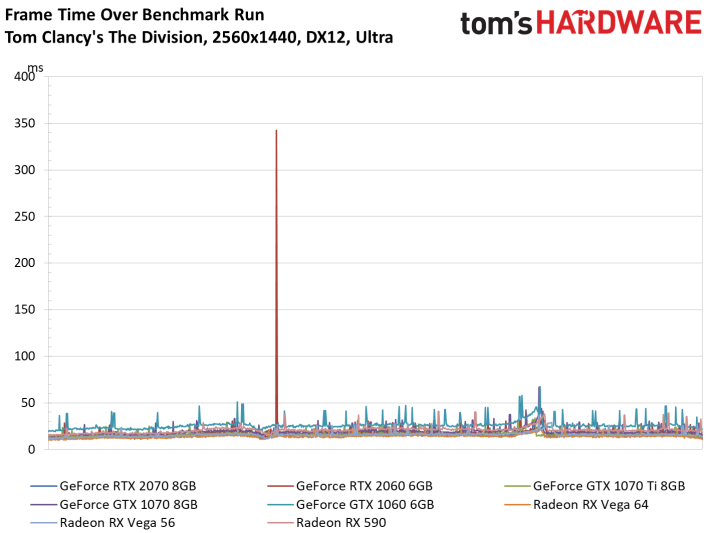
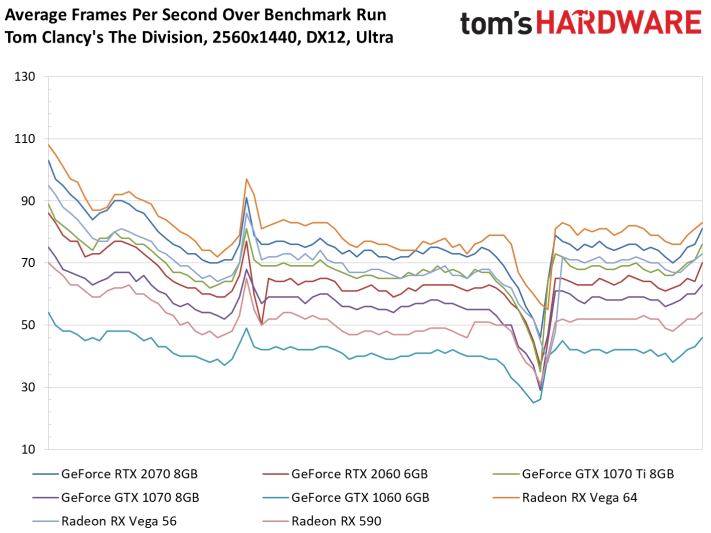
Vega 56 remains a strong performer at 2560x1440 using this game’s Ultra preset. It’s 9 percent faster than RTX 2060, which itself lands between GTX 1070 Ti and 1070.
MORE: Best Graphics Cards
MORE: Desktop GPU Performance Hierarchy Table
MORE: All Graphics Content
Current page: Results: Tom Clancy’s Ghost Recon Wildlands and Tom Clancy’s The Division
Prev Page Results: Metro: Last Light Redux and Shadow of the Tomb Raider Next Page Results: The Witcher 3 and Wolfenstein II: The New ColossusStay On the Cutting Edge: Get the Tom's Hardware Newsletter
Get Tom's Hardware's best news and in-depth reviews, straight to your inbox.
